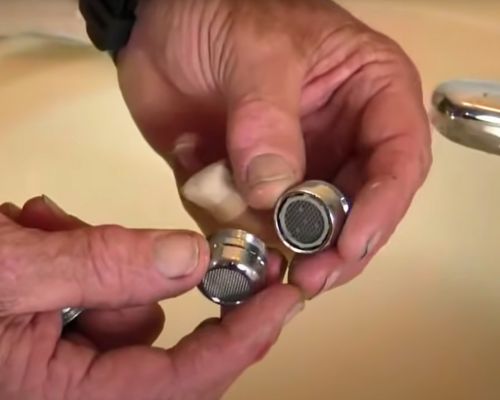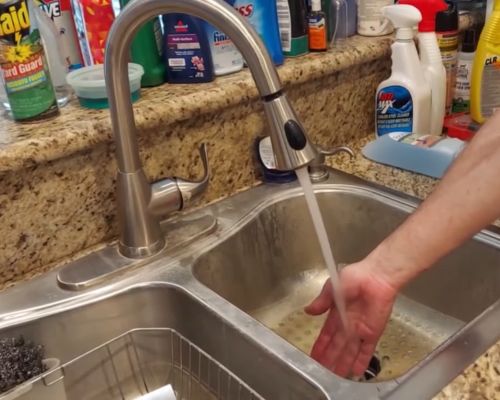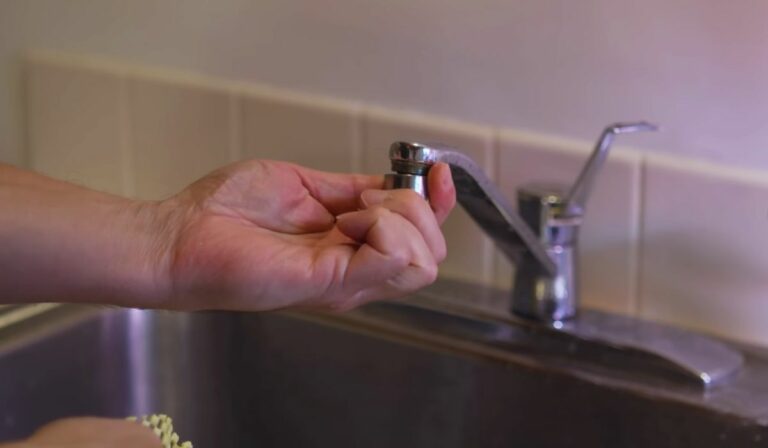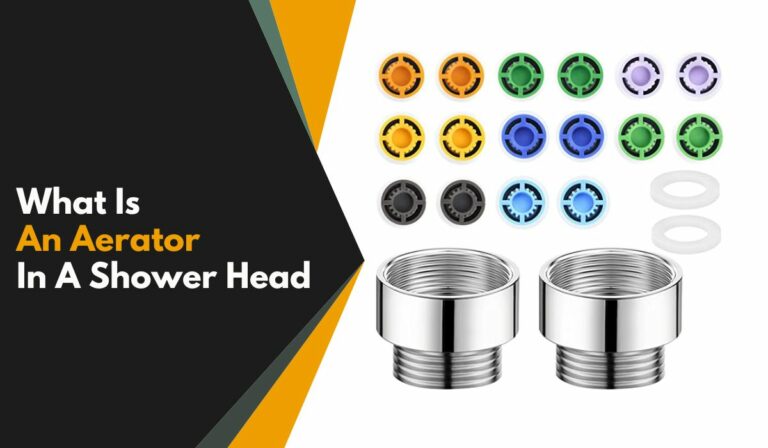How Much Water Does a Faucet Aerator Save?
So, you might already know that aerators are one of the standard components of all faucets. Alongside playing other roles, it helps you do savings on the water bill. But the real question is, how much water does a faucet aerator save?
According to US EPA (Environmental Protection Agency), aerators can save 700 gallons of water per year for an average family. That amount of water equals 45 showers. So, you can save the cost of 23.33 gallons per month on the water bill.
But how does the faucet aerator save water? Also, does the aerator offer the same savings throughout its lifespan? You can get to know it all by keeping on reading.
What Is a Faucet Aerator?
Before anything else, let’s discuss what a faucet aerator is. At the core, the aerator is one of the integral parts of modern faucets. Want to know where does it reside? It is basically a small part that you will find at the head of the taps.

If you look at the faucet’s head, you will see a small mesh screen. Well, those are parts of the aerator. But what are these screens there for? These screens are generally made of plastic or metal and filter out large debris and contaminants.
Besides the screens, the aerators also come with a water flow restrictor, which restricts the water flow. As it comes with all these parts, it goes without saying that the importance of a faucet aerator is pretty immense.
Why Is the Aerator Important?
The faucet aerator has multiple roles. Basically, it first makes sure that the flow of water is correct. The water flow restrictor part of the aerator comes into play in this regard.
So, how do faucet aerators affect water quality? Well, it does not directly affect the water quality, but it indeed has an impact on the water flow.
Aerators mix air into the water flow. This eventually keeps the flow smooth and lowers the pressure. For that reason, you are less likely to drench yourself and can enjoy a steady flow.
But can a faucet aerator improve water pressure? Well, the typical flow rate of a faucet aerator is from 2.2 to 2.5 GPM (Gallons Per Minute). This water flow rate is just right for you to do everything you want with the faucet.
Most importantly, this flow rate ensures you do not use more water than you have to. Now, by making sure that you do not waste water, the aerator eventually conserves water.
That said, you might already know how a leaky faucet can affect water bills. And one of the reasons why taps leak is a faulty aerator. So, if you want to enjoy aerators’ water-saving features, you must maintain them.
How to Maintain Water Faucet Aerators to Optimally Conserve Water
There’s no need to go through too many hassles to keep the faucet aerators in good shape. All you have to do is clean it regularly.
And when it comes to cleaning a faucet aerator, these simple steps should be more than enough –
1. Turn the main shut-off valve off
First, you should turn the main shut-off valve of your faucet off. This will prevent you from accidentally turning the faucet handle during the process and potentially losing the small parts.
2. Plug the sink
In addition to turning the shut-off valve, you should plug the sink. Anything can go wrong during the process, and small parts of the faucet can fall off. With the sink blocked, you can ensure no pieces get into the drain when accidents happen.
3. Remove the aerator with a pair of pliers
You must use a pair of pliers to get the aerator off the faucet. But do not just use the plier on its own. Instead, wrap a towel or rag on the aerator. Alternatively, you can tap the pliers’ jaws with painter’s tape.
That will prevent the aerator from getting scuffed and eventually looking like a mess on the faucet.
Nonetheless, to get the aerator off, you should grab it with the plier and rotate it counterclockwise. It should come loose after a couple of turns. Once it does, twist it off with your fingers.
4. Clean the aerator by soaking it in vinegar
Once the aerator is off the faucet, get a bowl and pour some vinegar into it. Dismantle the aerator as much as possible and put the parts inside the bowl. Keeping the pieces soaked overnight is better, but you can leave them like that for a few hours.
5. Clean the parts with a brush and rinse them with water
After getting the aerator parts out of the bowl, use a brush to remove the loose bits of sediments and minerals. Then, rinse the pieces under the water. But if you think you may lose them while rinsing, just soak them in clean water for a few minutes.
6. Put the parts together and install the aerator back
With the pieces of the aerator clean, you can put them together. Once the aerator is in one piece, you can place the aerator back in the faucet head. Tighten it with your hands as much as possible.
Wrap it up with a towel or a rag again, and then tighten the aerator with pliers. Remember, you need to rotate it clockwise to secure it. But do not overtighten it!
How Do You Know That the Aerator Is Not Optimally Conserving Water?
Even with proper maintenance, the faucet aerators can get faulty. After all, the parts can get worn out or damaged over time. And when the aerator is worn out, you should replace it as soon as possible.

Want to know how can you tell whether the faucet aerator has gone faulty? Well, these are the telltale signs –
1. Low water pressure
When the faucet aerator becomes faulty, it generally fails to offer you the same water flow as before. Sometimes, the water pressure can be so low that you will fail to do anything with the faucet.
2. Misdirected or spitting water
A faulty aerator can make the faucet offer misdirected water. In addition, the faucet can suddenly start spitting water, which can drench you. These are all expected. After all, a faulty aerator cannot monitor the flow of the water anymore.
3. Leakage
As hinted earlier, faulty aerators are one of the reasons why faucets leak water. The dripping can be constant, wasting liters of water in minutes. And in such cases, the leakage can increase your water bill instead of offering you some savings.
How Do I Find the Right Aerator Replacement For My Faucet?
So, when your faucet aerator is not saving water appropriately, it will be time to replace it. But how do you know which size of aerator you have?
There are basically three standard sizes of aerators. And it’s better to determine which one you have before you look for replacements.
You should get yourself a nickel, a quarter, and a dime for that. Here, you will be basically comparing these coins with the aerator to determine the exact size. Of course, you must take the aerator out to compare it with the coins.
Does the aerator match the size of the quarter? In that case, you have a “Regular” sized aerator. On the other hand, if the aerator matches the size of the nickel, it’s a “Junior” size.
Finally, if your faucet’s aerator has the same size as the dime, you are working with a “Tom Thomb” aerator. Keep this sizing in mind and look for a replacement.
Alternatively, you can go through the manual to look for the size. Most of the faucet brands will include that information in the user guide.
Final Words
Are you still wondering how much water does a faucet aerator save? In short, aerators can save up to 700 gallons of water per year. And that’s a lot! So, if your faucet currently has a faulty aerator, you need to replace it immediately!
Also, keep the maintenance procedure in mind. That will help you to get the best performance out of the faucet aerator and make it last for a prolonged time.




![Are Faucet Aerators Universal? [Determine The Correct Size]](https://faucetfam.com/wp-content/uploads/2023/01/Are-Faucet-Aerators-Universal-1-768x432.jpg)


